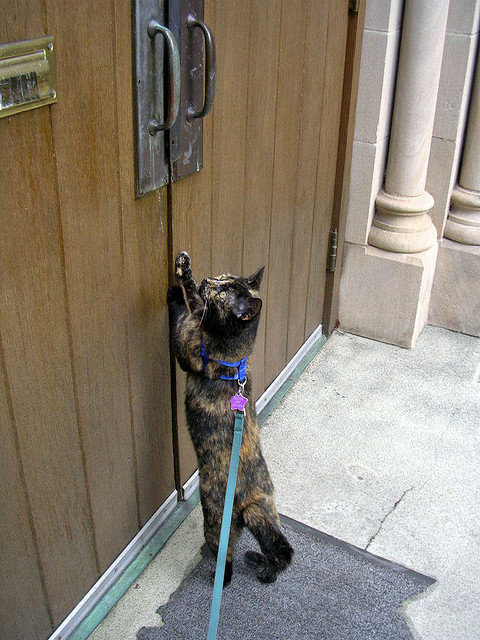Even the smallest and most adorable of dogs has incredibly hard, sharp claws and they can easily ruin your favourite furniture and doors. When dogs get restless, they are naturally inclined to scratch at things, and it doesn’t take much for them to leave unsightly claw marks at the bottom of your door.
Some pet owners pre-empt this by installing pet doors so that their pets can get in and out easily, eliminating the need to scratch. If you can’t do this, don’t despair. You can train your dog not to scratch, and it’s usually possible to repair the damaged wood.
Fixing a Scratched Door
Start by assessing the damage. Light scratches can treated easily just by sanding down the damaged area, wiping it clean, and then repainting. Deeper scratches, however, will require more thorough treatment.
To fix more serious scratches, sand off the paint around the damaged area (and a little untouched wood too), and then use a wood filler to mask the deepest scratches. Let the filler dry, and then repaint the door as normal.
Image source: http://www.flickr.com/photos/shamanic-shift
hhhh
Give your home a facelift with our selection of internal solid wood doors. Fire doors, glazed doors, oak, walnut and more. Great prices & free delivery over £750!
Matching Colours
If you can’t find a paint that matches the original colour perfectly, buy some gel stains and blend them to get a match that is as close as possible. When attempting to blend colours, start with a lighter stain and gradually make it darker. It’s much easier to correct a too-light colour than it is to lighten one that is too dark.
Once you’ve found a good match, apply it to the sanded part of the door, and lightly feather that paint into the area that has the original stain. Let the paint dry, and see how it looks. You may find that the gel has a dull finish, compared to the original paint on the door. If this is the case, you can make it look glossy by spraying the gel with a clear finish.
Image source: http://www.flickr.com/photos/thedalogs
hhh
Tips and Warnings
It’s easy enough to fill in deep scratches and paint over the filler if your door is painted rather than stained. However, stained or varnished doors are harder to take care of. Don’t use traditional filler with varnish. Instead, try to sand down the damaged area and then match the existing varnish with a fresh coat.
If you are able to do so, consider fitting a pet door at the same time as you repaint the existing wood. You may not have the option to do this if you are living in a rented property, but it is something that is worth investigating. Your pets will be much happier if they have the freedom to let themselves in and out.
Wait until you are confident that your dog has conquered its impulse to scratch before taking the time to treat the door, otherwise you’ll end up needing to varnish or repaint again and again. Naturally, after you have repainted the door, it’s important to keep your pets away from it while the new coat dries.







